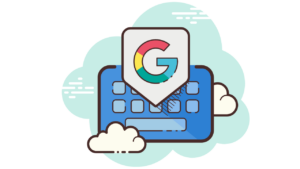Chat GPT: Educator’s Friend or Foe?
It took only 5 days for Chat GPT3 to reach a million+ users. Predictions for its use included helping answer questions, run a business, write books or generate test questions and summaries quickly and easily. However, it was only as smart as the data sets used to train it and they were limited in scope and apparently lacked any sense of truth or morality such that it was initially answering questions about how to build bombs at home with recipes for making home made bombs. Reminiscent of Microsoft’s Chatbot experiment of a few years ago, Tay(6), it lacked any moral compass (cue Isaac Asimov’s Laws of Robotics(7) which any sci-fi geek knows well) and it seemed like Chat GPT3 was a bit overhyped and failing the Bar exam(8) among others did not help. But GPT4 is different.
It has apparently passed numerous tests with flying colors(8) and has a much wider scope of knowledge and capabilities. Linking Chat GPT to Microsoft Bing and Google Chrome has only added to what will surely become the ubiquitous presence of this AI tool in our daily lives and will in turn enrich its knowledge and breadth of uses as time goes by. So, is this actually a bad thing for educators?
Plagiarism:
The American Psychological Association (APA) 7th edition states that:
- Some assignments do not permit the use of ChatGPT or other generative Artificial Intelligence (AI) tools. Confirm with your course lecturer what is permitted for a specific assignment prior to commencing.
- Where an assignment requires ChatGPT to be cited, you must reference all the content from Generative AI tools that you include. Failure to reference externally sourced, non-original work can result in Academic misconduct.
- Content from generative AI is a nonrecoverable source as it can’t be retrieved or linked.
- We recommend that you base the reference for generative AI content on the reference style for personal communication or correspondence.(1)
Thus, it is up to the instructor to set the standard here and referencing it as a personal communication would weaken its research and academic value and standing within most types of academic writing.
Further, there are tools for checking for GPT content like “Turnitin Originality, an in-market product that investigates the authenticity of student work, can detect some forms of AI-assisted writing and report on indicators of contract cheating. And, other recent product enhancements are detecting AI writing in our research and development labs. We will incorporate our latest AI writing detection capabilities—including those that recognize ChatGPT writing—into our in-market products for educator use in 2023.”(4)
Another option is student created https://www.zerogpt.com/ the self-styled “most Advanced and Reliable Chat GPT detector tool.” Which means that students will not be able to slip an assignment past an observant instructor – especially if that instructor has seen numerous samples of the students’ actual writing during a typical term.
Quality of Output:
In using Chat GPT 3 to write job posts and performance feedback, Textio (2) found that:
*ChatGPT explicitly encodes common gender stereotypes and biases. Feedback written by ChatGPT sometimes assumes an employee’s gender based on the roles and traits provided in the prompt.
*When prompts specifically include an employee’s gender, ChatGPT writes longer feedback for female employees, and the additional words included in feedback for women typically add more criticism.
*ChatGPT pushes back on some demographically specific prompts, but it’s inconsistent. It especially doesn’t handle race very well.
Open AI responds by assuring us that GPT-4 will be much harder to trick, won’t spit out falsehoods as often, and is more likely to turn down inappropriate requests or queries that could see it generate harmful responses. But it is still unlikely to be 100% reliable in all cases so it should still be used only for very specific tasks, like summarizing an article or creating test questions or prompts within a very clearly delineated and limited area of interest.
Implications for the Classroom:
The University of Washington Center for Teaching and Learning has issued strategies for instructors to help them communicate with students, set expectations, and develop assignments in the age of ChatGPT and other AI-based tools(3). The strategies are broken into several areas, including:
Set clear policies for the use of AI in specific courses;
Communicate the importance of college learning;
Assess a student’s process of learning as much as (or more than) the outcome;
Acknowledge that the struggle is part of learning;
Consider teaching through AI-based tools.
This suggests that Professors will have to be a lot more proactive in reviewing students’ writing for possible plagiarism based on GPT or other AI tools. A return to in class writing assignments or at least numerous drafts of any significant writing assignment will help ensure that students are submitting their own writing and ideas and not simply copy and pasting output from an AI based tool.
On the other hand, a number of school districts have banned Chat GPT from their classrooms, networks and devices(5) including: the New York City Department of Education, Seattle Public Schools and Los Angeles Unified School District, and Baltimore County Public Schools in Maryland.
In Australia, jurisdictions including Western Australia, New South Wales, Queensland, and Tasmania, have blocked students from accessing ChatGPT on school internet networks, per ABC.
One of France’s top universities, Sciences Po, banned the use of ChatGPT and other AI tools. In India, Bangalore’s RV University banned students from using ChatGPT. The university said it would conduct surprise checks on students suspected of using the technology, asking them to redo the content on their own.
This seems a bit extreme and perhaps even unrealistic since students at home or off campus will be able to access these tools quite easily and most probably will unless most assignments are done in class using school provided devices with the aforementioned restrictions in place.
Ultimately, Chat GPT and its ilk are here to stay and will only become more advanced and capable as time goes on. We can learn to use them or partner with them in realistic and specific ways or be left behind as the rest of the world chooses to benefit from their ever expanding abilities and applications. I’m just hoping Chat GPT will be able to serve as a virtual assistant or even an AI TA at some point in the future giving me more time for actual teaching by helping me grade, test or administer my classes more effectively than a merely human teacher like myself is capable of.




